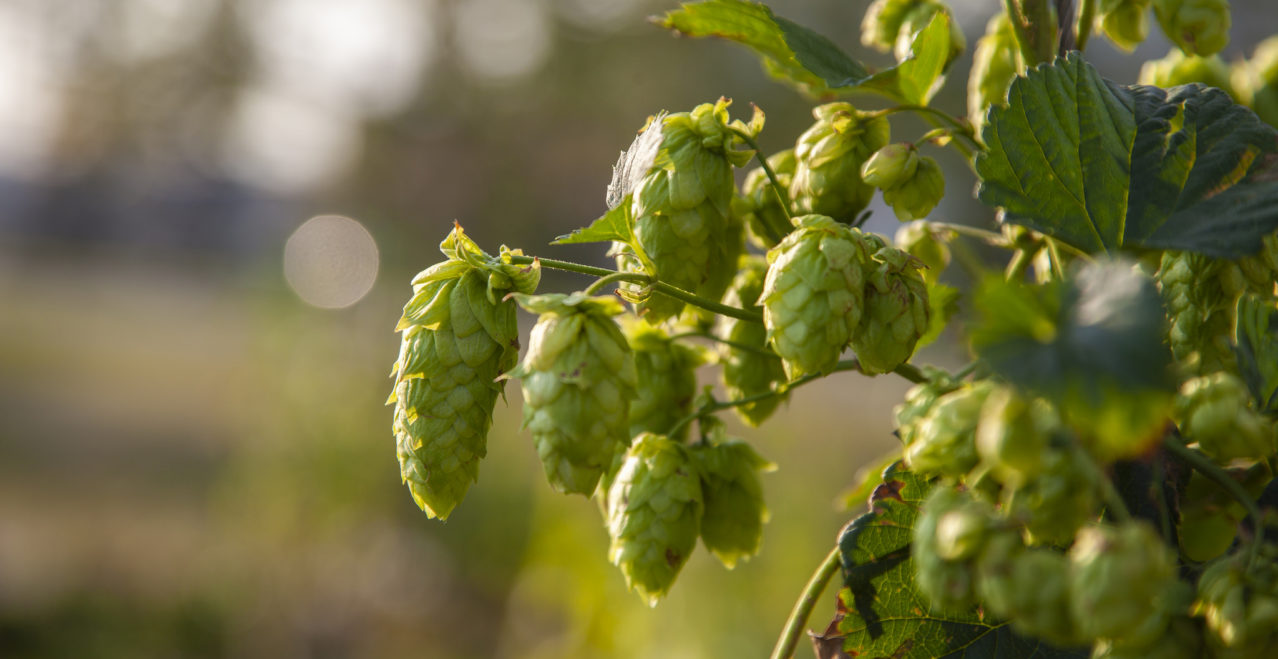Citradelic IPA
Single Hop American IPA
West Coast Style IPA with tropical tones


What's Brewing
December 21, 2018
What's in a Beer? Hops 101.

‘Humulus Lupulus’. The words themselves almost have a spell-like grasp on brewers and beer-enthusiasts alike. Quite simply, we’re referring to hops. As one of the 4 main ingredients in your perfect pint, these tiny flower-like ‘cones’ prove to be the most influential ingredient on the taste, aroma, and bitterness of beer. If Malt is the backbone providing all the fermentable sugars in your pint, then hops are the heart and soul. Closely related to cannabis, the vine-like plant grows wild all over the northern hemisphere and is now cultivated worldwide.
Hops are wildly generalized into two categories; Bittering hops and Aroma hops. When the sweet malty base of beer is boiled, called ‘wort’, the timing of hop additions allows the brewer to showcase and prioritize certain desired characteristics from the tiny flower, like the level and intensity of bitterness. Heat changes everything and an early addition of hops allows for longer exposure to heat. The heat kicks off a chemical reaction that transforms the resins, referred to as ‘Alpha Acids’, within the plant and results in increased bitterness. Hop varietals that have a high content of alpha acids are sought out for this part of the brewing process and are referred to as ‘Bittering Hops’.
A late addition of hops to the boil, which reduces the amount of time exposed to heat, allows the brewer to safeguard the delicate oils within the plant. Why is that important? Every hop trait outside of bitterness, such as aroma, can be attributed to these hop oils. Oils within each hop varietal exhibit different flavours and aromas, which help give the brewer creative control over their beer.
Had a pint that showcased floral, perfumey, spicy aromas? You might be on to some Hallertau hops from Bavaria, and it might be a Big Rock Rhine Stone Cowboy in your glass! Earthy, herbaceous, tea-like? That might be a Fuggle hop from England in your brew, and you might be drinking our Session IPA! There are hundreds of unique varieties out there with Hop breeders bringing more and more to the scene each year .
Want to have an idea of how bitter your beer is before drinking it? Within the industry there’s a standard way of measuring bitterness that gives the drinker a heads up before their first sip. IBUs, or “International Bitterness Units” measure the isomerized alpha acids within a beer (try remembering that one!) essentially a fancy way of saying how bitter a beer is. The higher the number, the higher the bitterness. We print IBUs on every Big Rock beer, so you know exactly what to expect from your chosen brew.
So whether you’re after the smooth citrus bitterness of the Citra hop in our Citradelic Single Hop IPA, or after the more mellow snappy bite of the Saaz hop in our Pilsner, you’ll be able to find hops showcased all through our lineup.
Next time you grab a Big Rock, head to our Beer pages to find out what type of hops goes into your favorite beer.